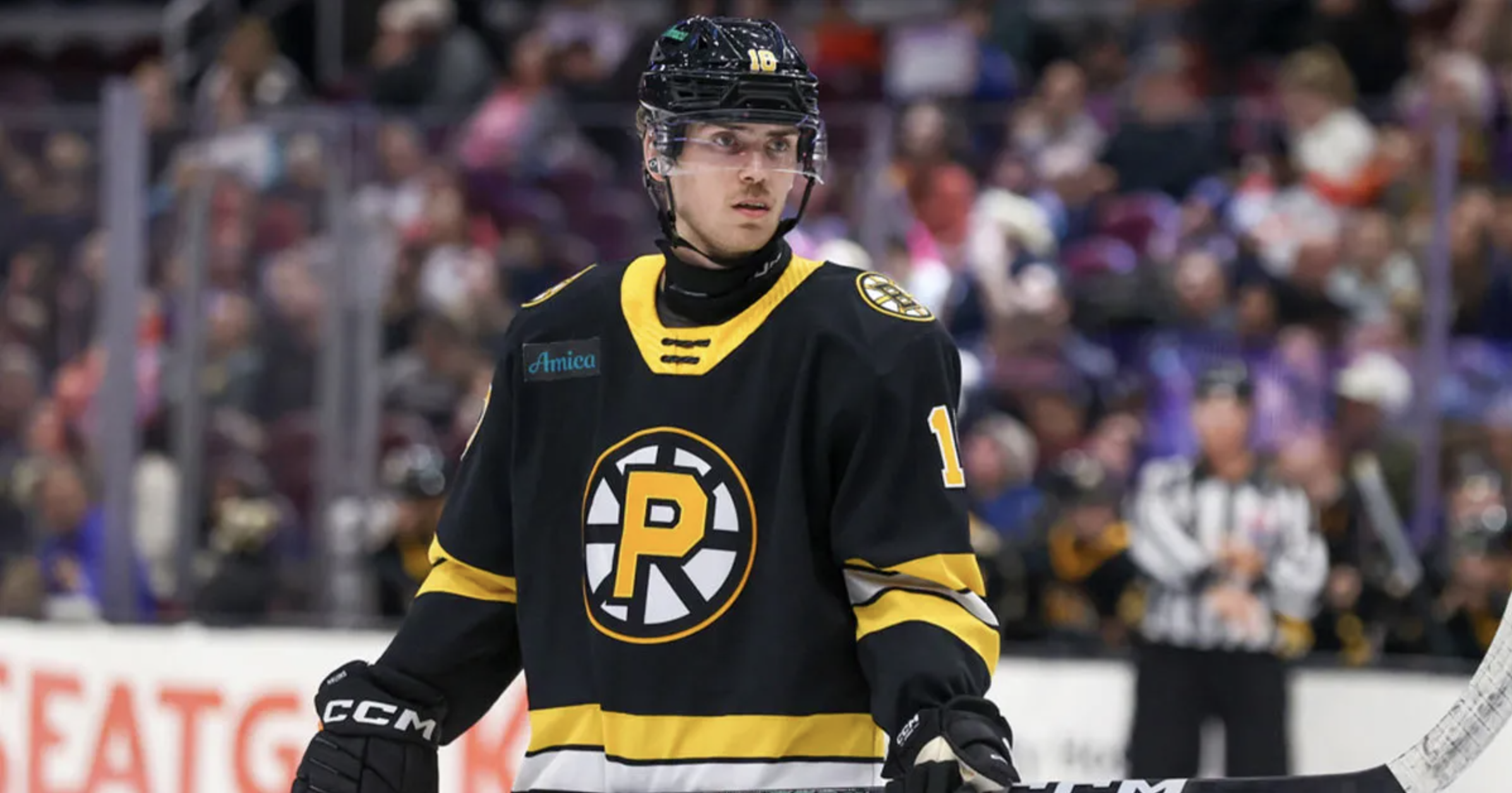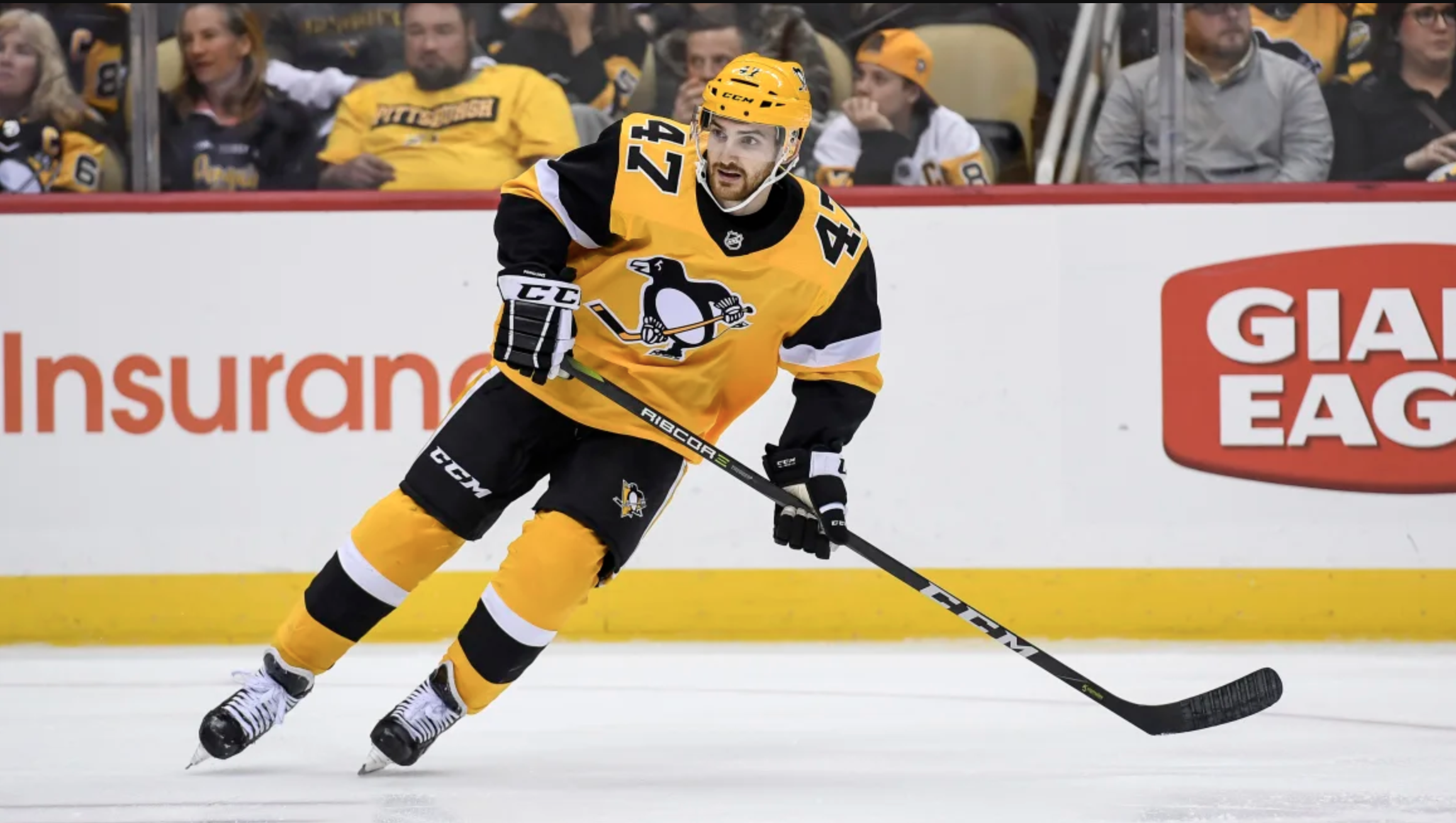Neck Guards Make a Comeback: Hockey’s Push for Protection
Written by Keyara Nelson
Thumbnail and Banner Photo by Frank Jansky on Icon Sportswire
On October 28, 2023, the sport of hockey experienced a terrible tragedy when former NHL (National Hockey League) forward Adam Johnson died after the blade of a skate cut his throat during a game in England. The incident marked the second widely reported skate-related death in recent years. In 2022, 16-year-old Teddy Balkind tragically lost his life after being cut by a skate during a high school hockey game in Connecticut. Nearly one year after Johnson’s death, the hockey world steps back once again to reevaluate the importance of neck guards, and speculation continues that this piece of equipment may become mandated for the NHL.
Teddy Balkind and Adam Johnson
There have been many injuries and a few deaths that have occurred on ice. Two of the most recent ones were those of Teddy Balkind and Adam Johnson. While skate-related injuries in hockey are rare, the deaths of Balkind and Johnson sent shockwaves throughout the hockey community. Both tragedies highlighted the inherent dangers in the sport, particularly from skate blades, which are extremely sharp and capable of causing severe injuries. Balkind’s death in 2022 came during a routine high school hockey game in Connecticut. He was skating upright and low, and during the normal course of play another player’s leg momentarily went in the air and Balkind was struck in the neck. This devastating event led to widespread calls for mandatory neck protection, particularly in youth hockey. Adam Johnson’s fatal injury in 2023 occurred during a professional game in England. He was struck by an opponent’s skate, which sliced his neck, resulting in massive blood loss. The accident occurred with around 8,000 fans watching, many of which were families with young children. His death, while a rarity in professional hockey, reignited conversations about safety measures and the importance of protective equipment, including neck guards. The question we are left to ask is, how are we going to ensure that these tragedies are not repeated? How many more injuries and deaths need to happen before change is initiated at a higher level? Certain leagues, such as the AHL, have decided that enough is enough.
Image by Jeanine Leech on Getty Images
Adam Johnson, shown playing for the Pittsburgh Penguins on March 29, 2019.
AHL’s Mandate
In response to these tragic events, many leagues have implemented mandatory neck guards on their players, including the AHL (American Hockey League). The AHL is a professional ice hockey league that serves as the primary developmental league for the NHL, based out of the United States and Canada. This league operates just below the NHL, yet to date, the NHL has not implemented the same safety measures as its developmental counterpart. The AHL Board of Governors unanimously approved mandatory cut-resistant neck protection for the 2024-25 season. This means all skaters, referees, and linesmen are required to wear approved protection regardless of their experience level. The mandate came shortly after the death of Adam Johnson, though he was not playing in the AHL at the time of his death; Johnson died during a game with the Nottingham Panthers in England’s EIHL (Elite Ice Hockey League). The EIHA (English Ice Hockey Association) has announced that starting January 1, 2024, neck guards will be mandatory for players at all levels of English Ice Hockey, yet this mandate does not include the EIHL (the league that Johnson was playing in). Hopefully, in time, the EIHL and NHL will follow in the footsteps of the AHL.
NHL’s Hesitation
The NHL has been much slower to adopt neck protection measures. This is not all that surprising when we look at the history of the NHL’s protective gear; change does not come swiftly for the league. Following the death of Bill Masterton, the only player to die from injuries suffered during an NHL game, a change took quite a long time. Bill Masterton died after a collision sent him backwards and the back of his head hit the ice. He was not wearing a helmet at the time. It took the league 11 years after this incident to make helmets mandatory, while an award in Masterton’s honour was created the same season he died. This incident seems to demonstrate the NHL’s reluctance towards change, but that does not stop some players from taking initiative themselves. Players like Erik Karlsson, Jake Walman, and Rasmus Kupari are all wearing neck guards without the mandate, and there are many more just like them. However, many players cite that the discomfort of the neck guards deters them from wanting to sport the protective equipment in a game. Nevertheless, discussions between the NHL and the NHLPA (National Hockey League Players' Association) are ongoing, and there is hope that neck protection will eventually become standard across the league.
Our Future
Despite pushback from some professional players, neck guards are becoming more widely accepted at junior and international levels, where the risks of injury are too significant to ignore; all youth hockey players in Canada must wear a neck guard. The push for mandatory neck protection is not just about protecting players from the potential of severe injury but also about setting a precedent for safety standards in the sport. As the hockey world continues to evolve, so must its approach to protecting athletes.
Here at SMU, female hockey players are all required to wear neck protection in both practices and games. During games, if a neck guard is not seen on a female athlete, they will not be allowed to play until they are wearing one. This differed from the male hockey players, as for a long time they did not have to wear neck protection. However, this has changed for the 2024-2025 season, as male hockey players in the AUS (Atlantic University Sport) league are now required to wear neck protection. As Chris Larade, head coach of the SMU Women’s Hockey team, explains, “Following Johnson’s death in the EIHL, all men’s and women’s hockey players in the AUS are now required to wear neck guards.” This is a positive development for the safety of hockey players across many teams, and hopefully sets an example for more change to come. Ultimately, these measures reflect a shift in the hockey world’s approach to safety—one that values the well-being of athletes above all else. With discussions ongoing, the hope is that more leagues will follow suit and prioritise the protection of their players, ensuring that the tragedies of the past do not repeat themselves.



